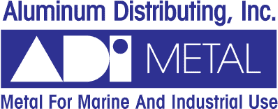| Items |

A304-075075125
304/304L Stainless Angle 0.750 x 0.750 x 0.125
|

A316-075075125
316/316L Stainless Angle 0.750 x 0.750 x 0.125
|

A304-100100125
304/304L Stainless Angle 1.000 x 1.000 x 0.125
|

A316-100100125
316/316L Stainless Angle 1.000 x 1.000 x 0.125
|

A304-100100188
304/304L Stainless Angle 1.000 x 1.000 x 0.188
|
|
Description
|
N/A
Type 304/304L is the modern version of "18-8" stainless steel containing approximately 18% chromium and 8% nickel and is the most commonly specified stainless steel used throughout the world. Type 304/304L is a versatile, general purpose stainless steel with good resistance to atmospheric corrosion, and to many chemicals and food and beverages. These grades can be specified in the annealed condition where they have very good formability. Higher nickel versions can be specified to enhance multi-stage deep drawing characteristics. Higher strength, cold-worked conditions can also be specified for Type 304/304L for spring type applications. Type 304/304L is non-magnetic in the annealed condition but may become slightly magnetic as a result of cold working.
|
N/A
Type 316/316L is a chromium nickel austenitic stainless steel containing molybdenum. The molybdenum addition enhances the corrosion resistance over that of 304/304L in halide environments as well as in reducing acids such as sulfuric and phosphoric acid. Type 316L can be dual certified as 316 when the composition meets the lower carbon limit of 316L and the slightly higher strength levels of 316. Type 316L should be specified for welded applications as the low carbon version eliminates chromium carbide precipitation and enhances the corrosion resistance in the as-welded condition.
|
N/A
Type 304/304L is the modern version of "18-8" stainless steel containing approximately 18% chromium and 8% nickel and is the most commonly specified stainless steel used throughout the world. Type 304/304L is a versatile, general purpose stainless steel with good resistance to atmospheric corrosion, and to many chemicals and food and beverages. These grades can be specified in the annealed condition where they have very good formability. Higher nickel versions can be specified to enhance multi-stage deep drawing characteristics. Higher strength, cold-worked conditions can also be specified for Type 304/304L for spring type applications. Type 304/304L is non-magnetic in the annealed condition but may become slightly magnetic as a result of cold working.
|
N/A
Type 316/316L is a chromium nickel austenitic stainless steel containing molybdenum. The molybdenum addition enhances the corrosion resistance over that of 304/304L in halide environments as well as in reducing acids such as sulfuric and phosphoric acid. Type 316L can be dual certified as 316 when the composition meets the lower carbon limit of 316L and the slightly higher strength levels of 316. Type 316L should be specified for welded applications as the low carbon version eliminates chromium carbide precipitation and enhances the corrosion resistance in the as-welded condition.
|
N/A
Type 304/304L is the modern version of "18-8" stainless steel containing approximately 18% chromium and 8% nickel and is the most commonly specified stainless steel used throughout the world. Type 304/304L is a versatile, general purpose stainless steel with good resistance to atmospheric corrosion, and to many chemicals and food and beverages. These grades can be specified in the annealed condition where they have very good formability. Higher nickel versions can be specified to enhance multi-stage deep drawing characteristics. Higher strength, cold-worked conditions can also be specified for Type 304/304L for spring type applications. Type 304/304L is non-magnetic in the annealed condition but may become slightly magnetic as a result of cold working.
|


